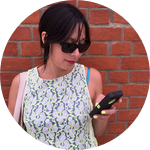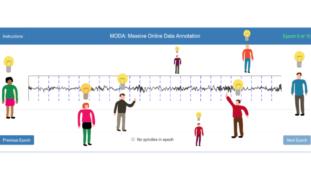Please wait...
About This Project
Brainwaves during sleep are a window into cognition, early marker of mental disorders, and brain deterioration due to age. However, detection of brainwave patterns by highly trained experts is extremely time consuming and costly! We hypothesize, that through the power of crowdsourcing, the general public can match the performance of these learned experts and help us find these important patterns in the brain.
More Lab Notes From This Project

Browse Other Projects on Experiment
Related Projects
There's an App for That! Developing an Accessible Cognitive Behavioral Therapy App
In today’s technological society a person’s entire life can be managed on their smartphone, so why not their...
The People vs. Academia: Crowdsourcing the analysis of sleep
Brainwaves during sleep are a window into cognition, early marker of mental disorders, and brain deterioration...
Can brain training help soldiers with brain injury regain hearing?
Hearing loss is one of the top disabilities facing veterans, with over $1 Billion in disability payments...


